Notes
Telltale Screenshots from U. of Missouri
If these are bountiful days for the camera, surely the same can’t be said for the media. Where protest is concerned, more cameras and more witnessing is making direct action in symbolic and physically constrained social spaces more complicated than ever.
The migration of news from print to the web was surely a boon for social activism. Ever aware of the camera, protests — with signs delivering “sound bites” and with clever political theatre — have grown ever more performative. At the same time, however, the rise of social media and personal photography has seen traditional media lose a lot of the authority it once had. Knowing they, as well as the lay citizen, can do their own documentation and distribution, states, extra-state actors as well as protest movements and groups tend to see the media as much as a nuisance, a target, or an agent out there to be leveraged or pushed around.
Studying the images from the student protests at U. of Missouri that just toppled the university president, I was intending to write about something completely different. Fascinated by the visual brew when race and social justice collide with commercial culture and the sports industrial complex, I was primarily interested in the optics surrounding these protests hypercharged by athletes from Mizzou’s extraordinarily lucrative gridiron program threatening to stage a football boycott.
That’s before I saw this video of a senior photojournalism major on assignment for ESPN (the university consistently recognized as one of the nation’s top journalism programs) in a tense confrontation with student activists from “ConcernedStudents1950.” I offer these screen shots for the way they speak to the complicated mess surrounding visual access and photo coverage of news events today.
Let me start off by saying, though, that the photo above requires some explanation. If you didn’t know any better, it might look like the photographer and the protesters were gesturing together in solidarity. Or, that the photographer and the demonstrators were brandishing opposing power signs, the photographer making a fist amidst “black lives matter” gestures.
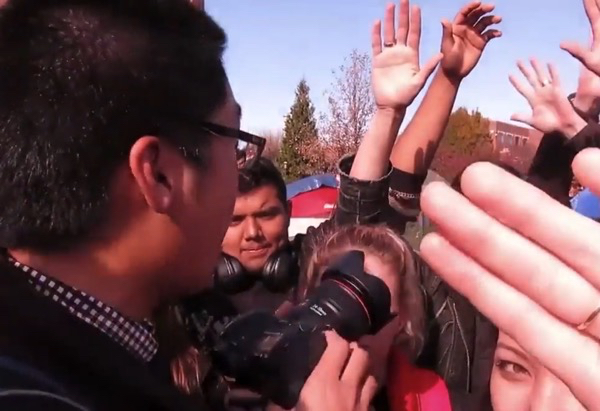
Instead however, what you see are protesters blocking the photographer from their “media free zone,” while trying to intimidate him and impede his view. As for the photographer, he attempts to get closer to the tent city and (rather bravely and confidently, I’d say) stands his ground while evoking his first amendment rights.
So, isn’t this how it goes these days? While the photographer with the traditional camera, impeded from shooting, stands toe-to-toe with a protester over his right to be there, we see two guys behind him shooting away on their iPhones. Whether they’re bystanders or student journalists, it almost doesn’t matter.
This scene, a highly familiar one, is also noteworthy for comparative access. Whereas the photographer is stonewalled, one of the protesters, intent on documenting the behavior of the photographer, freely hoists her white iPhone and shoots away.
This photo was interesting to me for the affect. Even though the student photographer is defending his rights, there is still that convention out there that journalist are not supposed to be getting fired up.
And finally, the hand in the face of the camera (the camera of the person taking the video) speaks to the more general abhorrence of censorship, and beyond the nuances, how much we lose when we don’t get to see.
Note: You can find a concise backstory of this incident complete with legal analysis by Jonathan Peters, an assistant professor of journalism at the University of Kansas, over at CJR.
(screen grabs: YouTube video/Mark Schierbecker via WaPo. WaPo caption: November 9, 2015 8:33 PM EST – A journalist at the University of Missouri was challenged and physically blocked from filming protests at the school. The man was met with chants saying, “Hey hey, ho ho, reporters have got to go!”)
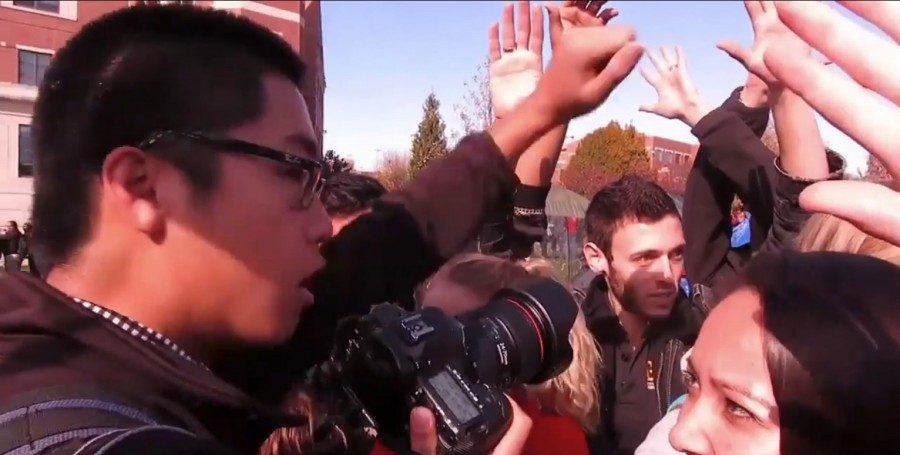
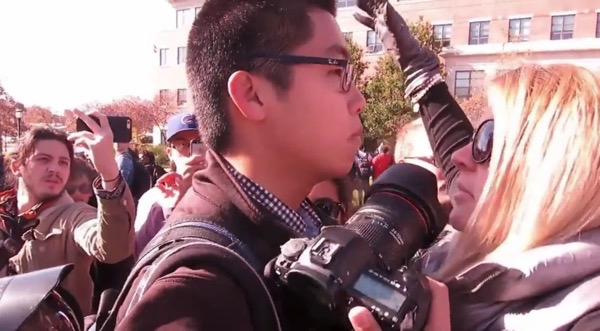
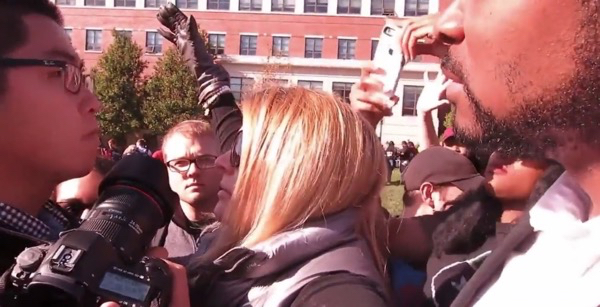
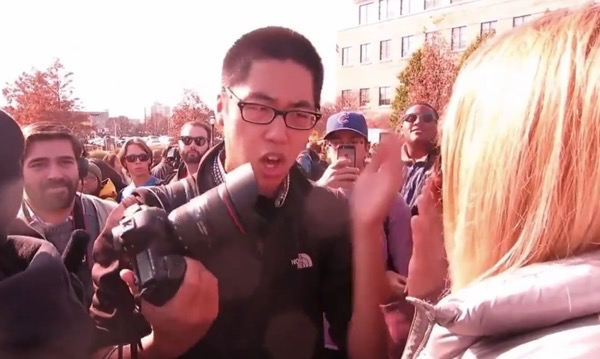
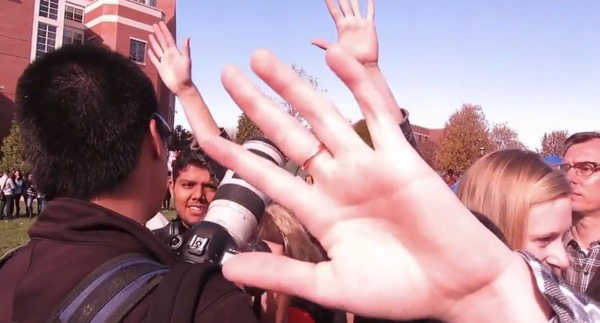
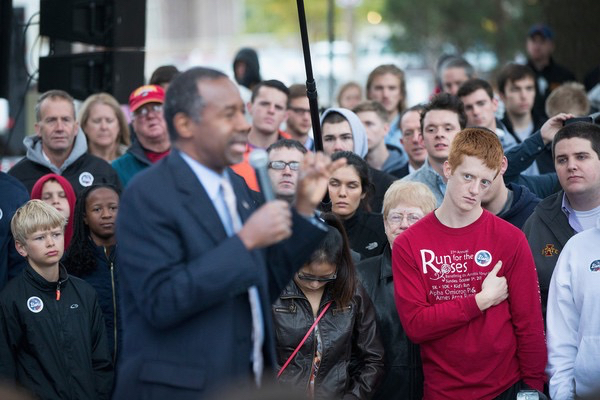
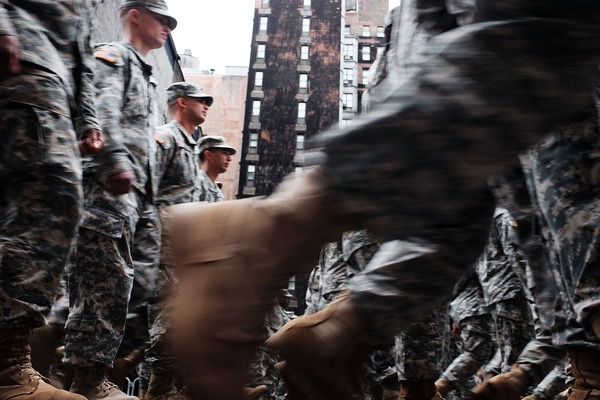
Reactions
Comments Powered by Disqus